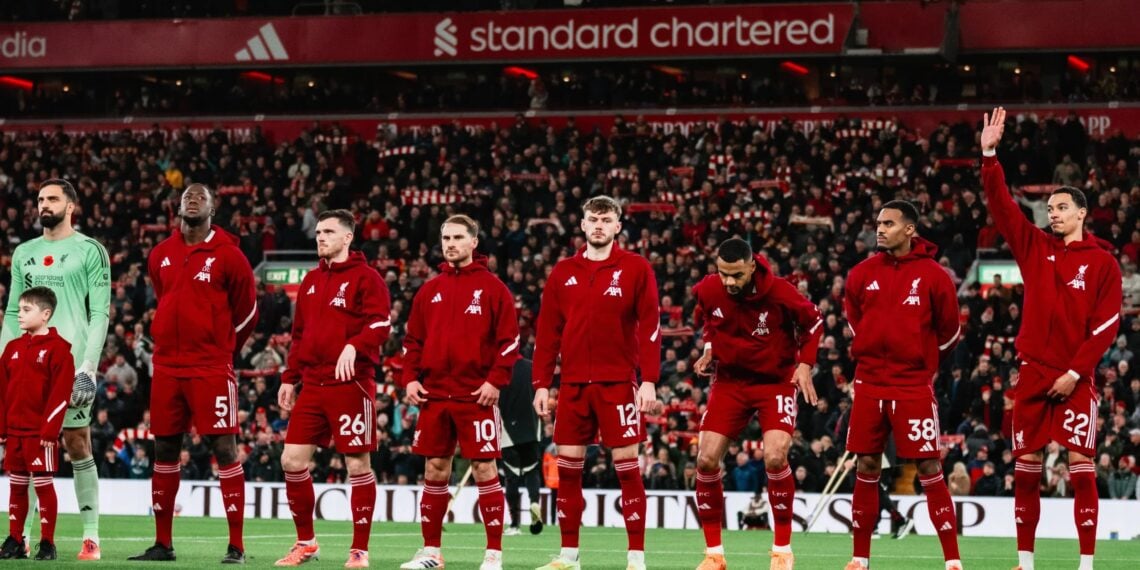From champions to crisis in just eleven games. Liverpool’s dramatic fall from grace in the Premier League has shocked the football world, transforming what should have been a triumphant title defense into a fight for survival in the top four. The defending champions, who cruised to glory last season with ruthless efficiency, now find themselves in eighth place, having lost five of their last six matches – a collapse few saw coming and fewer can explain.
Rewind to what feels like the distant past of August 2025, and the fear from rivals that Liverpool would repeat their dominance of last season in the Premier League was palpable. They eased to the title in 2024-25, before going on an uncharacteristic spending spree over the summer, signing some of the best and brightest talents in Europe as they looked to cement their place at the top of English football.
The optimism was justified. Liverpool had invested heavily, bringing in world-class talent to strengthen an already formidable squad. But football has a way of humbling even the most confident predictions.
Table of Contents
From Perfect Start to Perfect Storm
And as starts to the season go, it could hardly have been better. After beating Everton in the Merseyside derby on 20 September, Liverpool sat in first place with 15 points following a perfect five wins from five in the Premier League.
Everything seemed on track for another title charge. The Reds had dispatched their opponents with the kind of efficiency that had become their trademark. But then the wheels came off in spectacular fashion.
Two months later, they sit in eighth place on 18 points after losing five of their last six. This dramatic reversal represents one of the most shocking collapses in recent Premier League history for a defending champion.
The Unthinkable Statistics
| Timeframe | Position | Points | Record |
|---|---|---|---|
| After Everton (Sept 20) | 1st place | 15 points | 5 wins from 5 |
| After 11 games (current) | 8th place | 18 points | 5 losses in last 6 games |
| Total losses 2024-25 season | – | – | 4 losses entire season |
| Total losses first 11 games 2025-26 | – | – | 5 losses already |
The criticism has been both spiky and plentiful, probably because of just how surprising their drop-off has been. Liverpool were not exactly convincing in their first five wins, but anyone who said they saw this coming was doing so more out of hope than expectation.
The Tragedy That Cast a Shadow Over Everything
Behind Liverpool’s statistical collapse lies a heartbreaking human story that cannot be ignored. That’s not to say difficulties weren’t anticipated. You would have to be stunningly ignorant to think the tragic loss of Diogo Jota in early July wouldn’t have a profound impact on the coaching staff and players who fought and celebrated alongside him last season, and on new arrivals whose introduction to life on Merseyside was overshadowed by mourning and sorrow.
The emotional toll on the Liverpool squad has been immense and ongoing. Speaking on Tuesday after Scotland’s dramatic win over Denmark that saw them qualify for next summer’s World Cup, Liverpool vice-captain Andy Robertson told BBC Sport: “I couldn’t get my mate Diogo Jota out of my head today. We spoke so much together about the World Cup… and I know he’ll be somewhere smiling over me tonight. I just couldn’t get him out of my head the whole day, so I was in a bit of trouble in my room earlier, but I think I hid it well from the boys“.
Those heartfelt words showed how difficult at least one of Jota’s former Liverpool teammates found it to keep a clear head going into a game, and that was on international duty. Imagine how much greater that sense of devastation and loss is at club level, where Robertson spent five years playing alongside Jota. Every game is a stark reminder that his mate is no longer there, and many players at Liverpool will be feeling the same. In elite sport where margins are famously paper thin, the impact of a significant emotional blow like that can’t be dismissed.
The Manchester City Defeat: Fine Margins Exposed
Liverpool’s most recent Premier League setback came at the worst possible venue against their main rivals. The 3-0 loss at Manchester City prior to the latest international break was a bad defeat to a rival, but those fine margins reared their head once again. It could have been very different had Virgil van Dijk’s goal – which would have made it 1-1 before half-time – been allowed to stand, as the Premier League’s Key Match Incidents panel said it should.
While Liverpool didn’t deserve to win at the Etihad, the decision highlighted how small moments can define seasons. Pep Guardiola’s side deserved the win and Liverpool did not play well at the Etihad, but it should be remembered that it came just over a week after the Reds enjoyed a solid victory over an in-form Aston Villa and five days on from an impressive 1-0 Champions League win over Real Madrid that, if anything, flattered the Spanish giants.
This contrast between Liverpool’s European excellence and Premier League struggles adds another layer of complexity to their season. They can still produce statement performances – just not consistently in domestic competition.
Viewed in the wider context of the season, though, it was understandable that the loss to City led to questions about the champions’ credentials ramping up several notches.
A Brutal Fixture List: Essential Context for the Crisis
Before writing off Liverpool entirely, context matters significantly. In fairness, their start in the league has been quite challenging. Of their 11 opponents, only one currently sits in the bottom six (Burnley), while the only team in the bottom half of the table they’ve played at home is Everton.
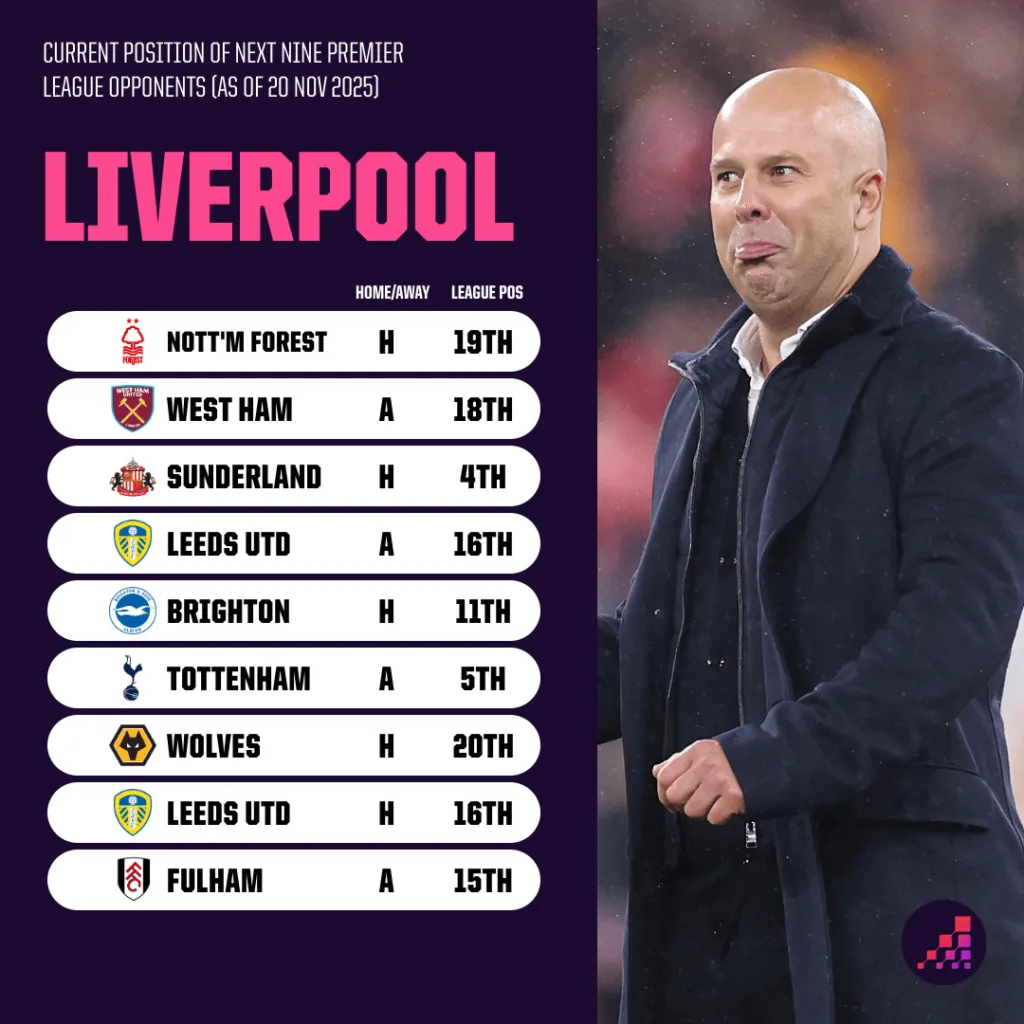
The fixture computer showed Liverpool no mercy. In fact, of the other nine teams in the top 10 of the Premier League, Liverpool have already played seven of them.
But Context Doesn’t Excuse Everything
That is not to sugar-coat anything; losing five of their first 11 league games is absolutely a ‘crisis’ in modern football terms, especially when you consider they lost only four in the whole of last season, and two of those came after they won the title and their performances clearly eased off.
The Light at the End of the Tunnel: Easier Fixtures Ahead
There is reason for cautious optimism regarding Liverpool’s immediate Premier League future. But as we looked at earlier this week, Liverpool have a kinder run of fixtures ahead of them on paper, starting with a home game against 19th-placed Nottingham Forest on Saturday. In fact, of their next five games, their only one against a team in the top half is hosting promoted Sunderland on 3 December.
This presents Liverpool with a golden opportunity to rebuild confidence and climb the Premier League table. However, easier fixtures on paper don’t guarantee results – especially for a team struggling with form and confidence.
Arne Slot’s Tactical Dilemmas and Selection Headaches
Manager Arne Slot faces numerous questions about his approach and team selection. Slot has plenty of questions to answer. Their improved performances against Villa and Real Madrid were largely credited to the fact he started his favoured midfield three from last season (Ryan Gravenberch, Alexis Mac Allister and Dominik Szoboszlai), but while that does probably remain his strongest trio, they also started four of Liverpool’s five league defeats. The City game perhaps confirmed the widely suggested solution of ‘just play last season’s team’ wasn’t quite the safety net people thought it was.
The Possession Paradox: Dominating the Ball But Not the Game
Liverpool’s tactical setup has created an unexpected challenge that opponents have exploited. We recently investigated their fallibility against long balls, so we won’t go through all that again. Partly related to it, though, is Liverpool are seeing plenty of the ball this season. Opponents are seemingly happy to go long, and if that doesn’t work, let them have possession and task them with breaking down a deep defence. Liverpool’s average possession per Premier League game is 60.7%, more than any other team, while their 78% of game time playing against either a medium or low block is the highest in the league.
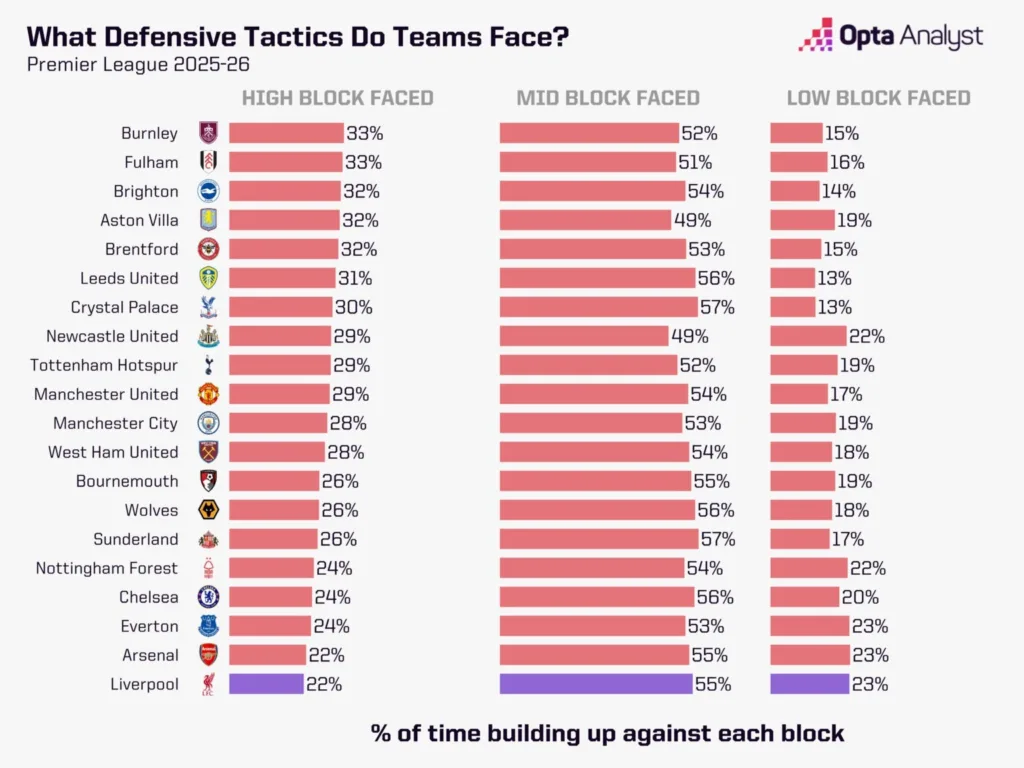
Teams have discovered a blueprint for frustrating Liverpool in the Premier League: sit deep, force them to break down organized defenses, and launch long balls when opportunities arise. The Reds have struggled to adapt to this tactical challenge.
The Florian Wirtz Puzzle: £100 Million Investment Yet to Pay Off
Liverpool’s marquee summer signing hasn’t delivered the expected impact in the Premier League. That may be where the signing of Florian Wirtz comes in. Slot has been accused of not having a plan for the German, but it seems relatively clear he was brought in to help Liverpool break down those low blocks that became a bigger thorn towards the end of last season. It just hasn’t worked particularly well yet.
The Crushing Weight of Expectations
A lot of pressure comes with a price tag of £100 million (potentially rising to £116m), and the fact Wirtz is yet to record a goal or assist in the Premier League hasn’t helped matters. He has performed very well in the Champions League, but that hasn’t yet translated to England’s top flight.
The statistics reveal a player thriving in Europe but struggling domestically:
| Metric | Champions League | Premier League |
|---|---|---|
| Open-Play Chances Created per 90 | 4.2 | 1.7 |
| Big Chances Created per 90 | 1.3 | 0.1 |
| Expected Assists per 90 | 0.55 | 0.15 |
| Goals | Multiple | 0 |
| Assists | Multiple | 0 |
Wirtz has created 4.2 open-play chances per 90 in Europe, but just 1.7 in the Premier League. He has created 1.3 big chances per 90 in the UCL, but just 0.1 in the league, while he averages 0.55 expected assists in the Champions League, which is down at 0.15 in the PL.
However, there’s reason for optimism following his international performances. The 22-year-old can do a lot more, and his two assists for Germany against Slovakia on Monday will hopefully give him the confidence to make an impact in the Premier League over the coming weeks.
Alexander Isak: The Missing Piece Returns
Liverpool’s other nine-figure investment may soon provide the clinical edge they’ve been missing. There is also the other nine-figure acquisition in the summer to consider, as Alexander Isak nears a return to action. The Swede is another puzzle Slot hasn’t yet solved, but Isak can unquestionably offer plenty once he gets up and running. Liverpool have a non-penalty shot conversion rate of just 15.3% in the Premier League this season. Isak had a non-pen shot conversion rate of 26.4% in the league last season, so getting anywhere near that should at least help matters.
The Hugo Ekitiké Success Story Amid the Chaos
Amidst Liverpool’s struggles, one signing has exceeded all expectations. The former Newcastle United man will have his work cut out getting into the team, though, as a rare success story at Anfield this season has been the form of Hugo Ekitiké. The Frenchman is Liverpool’s top scorer in all competitions with six goals, though Slot has said he can play him and Isak together, as he did in the 5-1 win at Eintracht Frankfurt.
Ekitiké’s ability to combine with other strikers has been evident at international level. Ekitiké showed how well he can work with another striker with his impressive first goal for France against Ukraine during the international break, linking with Kylian Mbappé superbly.
The Attacking Efficiency Crisis: Creating But Not Converting
Liverpool’s goal-scoring problems extend beyond individual players to a systemic failure to capitalize on opportunities. While Ekitiké has largely shone, his teammates are generally not firing well enough in front of goal. Liverpool averaged 2.3 goals per game on their way to the Premier League title last season, but that’s down to 1.6 after 11 games in 2025-26.
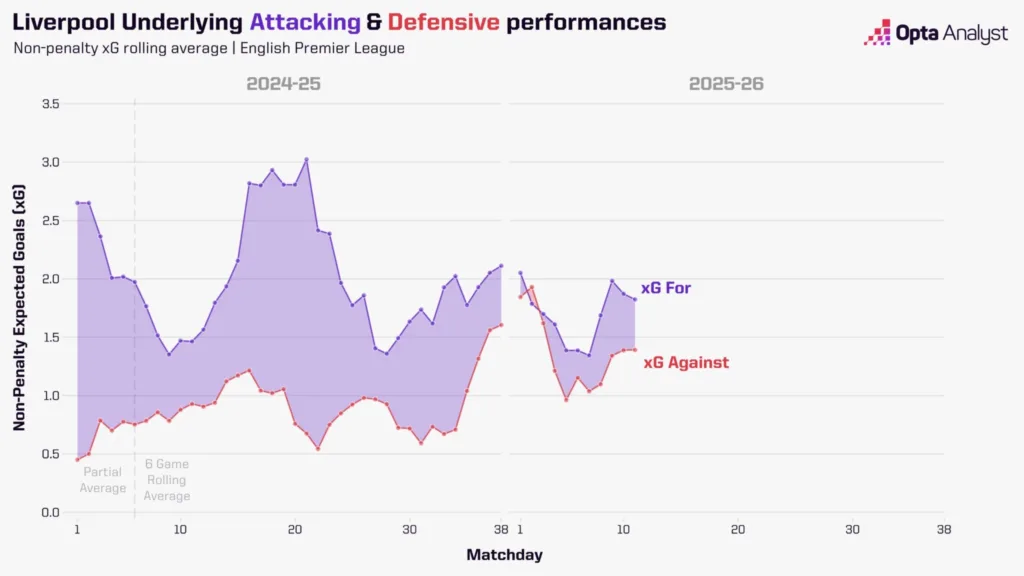
Creating Plenty, Converting Poorly
The statistics reveal a Premier League team creating opportunities at an elite level but failing catastrophically to capitalize:
| Big Chances Metric | Liverpool 2025-26 | League Comparison |
|---|---|---|
| Big Chances Created | 33 | 4th most (behind Chelsea 37, City 34, Palace 34) |
| Big Chance Conversion | 27.3% | Only Villa (20%) and Leeds (22.7%) worse |
| 2024-25 Comparison | ||
| Big Chances Created | 150 | Most in league (30+ more than any team) |
| Big Chance Conversion | 38.7% | Comfortable league leaders |
Only Chelsea (37), Man City (34) and Crystal Palace (34) have created more big chances than Liverpool (33), but only Aston Villa (20%) and Leeds United (22.7%) have a worse conversion rate of such opportunities than the Reds (27.3%). Last season, they comfortably created the most big chances in the league (150, at least 30 more than any other team), with a 38.7% conversion rate.
The drop from 2.3 goals per game to 1.6 goals per game represents a 30% decrease in scoring output – a catastrophic decline for defending champions.
Defensive Fragility: The Other Side of Liverpool’s Crisis
Liverpool’s problems aren’t confined to attack – their defensive record has been equally concerning. That’s the attack, and defensively, Liverpool also haven’t been up to snuff. They’ve conceded 17 goals in the Premier League; only seven teams have allowed more, while just eight have faced more shots on target (46), and eight have a lower xG against (13.9).
Big Chances Conceded: A Worrying Trend
The big chance statistics paint an alarming picture of defensive vulnerability. Perhaps more alarmingly, only Burnley (34) and West Ham (32) have allowed more big chances against than Liverpool (29). Compare that to last season when only Arsenal (58) and Nottingham Forest (73) allowed fewer big chances than the Reds (75).
| Defensive Metric | 2024-25 Season | 2025-26 (11 games) |
|---|---|---|
| Big Chances Allowed | 75 (3rd best) | 29 (3rd worst) |
| Goals Conceded | Low | 17 (8th worst) |
| Shots on Target Faced | Low | 46 (9th most) |
| xG Against | Low | 13.9 (9th highest) |
The Game State Problem: Always Playing Catch-Up in the Premier League
One of Liverpool’s most concerning trends is their inability to establish and maintain leads – a complete reversal from their title-winning season. That could partly explain why they have struggled to go ahead and stay ahead in games this season. Liverpool have conceded the first goal in eight of their last 10 outings in all competitions and have lost every Premier League match in which they’ve trailed at any point this season.
Time Spent Winning vs. Losing: A Shocking Reversal
The contrast with last season’s dominance is stark and devastating:
| Game State | 2024-25 Season | 2025-26 (First 11 Games) | Context |
|---|---|---|---|
| Time Leading | 45.6% (most in PL) | 24.1% (269 mins, 35 secs) | Only 7 teams spend less time ahead |
| Time Losing (Total) | 615 mins, 1 sec (entire season) | 36.9% (413 mins, 4 secs) | Already 67% of last season’s total |
| Time Losing (Comparison) | Lowest in league | Only West Ham (47%) and Wolves (57.8%) worse |
As mentioned in our recent article on game states in the Premier League, Liverpool have held a lead for comparatively few minutes in 2025-26. Only seven teams have been ahead for a lower percentage of their games than Slot’s side (24.1% – 269 mins, 35 secs). Even rivals Everton have been ahead for longer (27.7% – 303 mins, 37 secs).

That is quite a drop from leading for the longest time last season (45.6%) on their way to winning the Premier League title.
The losing statistics are equally damning. Liverpool have been behind for 36.9% of their game time (413 mins, 4 secs); only West Ham (47%) and Wolves (57.8%) have been losing for a greater percentage of their matches. Even 17th-placed Burnley (36.4%) and 19th-placed Forest (32%) have had less time in a losing position than the Reds across their first 11 games.
The pace at which they’re accumulating losing time is staggering. That’s particularly significant when you consider they were only behind for 615 mins, 1 sec in the whole of last season, a total they’re already three quarters of the way to just 11 games into this term.
A Glimmer of Hope: Historical Patterns Suggest Improvement
Despite the overwhelming doom and gloom surrounding Liverpool’s Premier League campaign, historical data provides some genuine optimism. There is some cause for optimism, though. Liverpool were generally winning games early last season, but some of their underlying numbers dipped a little after a strong start. However, as you can see from the graphic below measuring xG for and against on a rolling six-game average, they improved markedly after around 11 games, and Slot will hope the same happens this season.
If history repeats itself, Liverpool could be on the verge of clicking into gear just as they’re entering their most favorable fixture period. The timing could hardly be better – or more crucial.
The Verdict: Now or Never for Liverpool’s Season
There is plenty for Slot and his players to fix, but the time is now for them to put their recent form behind them and get back to winning regularly. That will be easier said than done with the eyes of the world on them, the ongoing mourning of Jota, and in a league where the style of play has changed so drastically in such a short space of time. But ultimately, quality usually shines through.
The combination of factors aligning creates a narrow window of opportunity:
- Easier Premier League fixtures against lower-table opposition
- Alexander Isak nearing return to fitness
- Florian Wirtz showing improved form for Germany
- Hugo Ekitiké’s continued excellence
- Historical pattern suggesting improvement around game 11
Liverpool must seize this moment. The next five games represent a crossroads that will define their entire season.
Liverpool must remind the rest why they were so frightened in August.
The defending Premier League champions have approximately five games against lower-table opposition to arrest their catastrophic slide and rebuild the confidence that characterized their title triumph. Anything less than maximum points from these fixtures would represent an unmitigable disaster for a team with Liverpool’s resources, recent pedigree, and championship DNA.
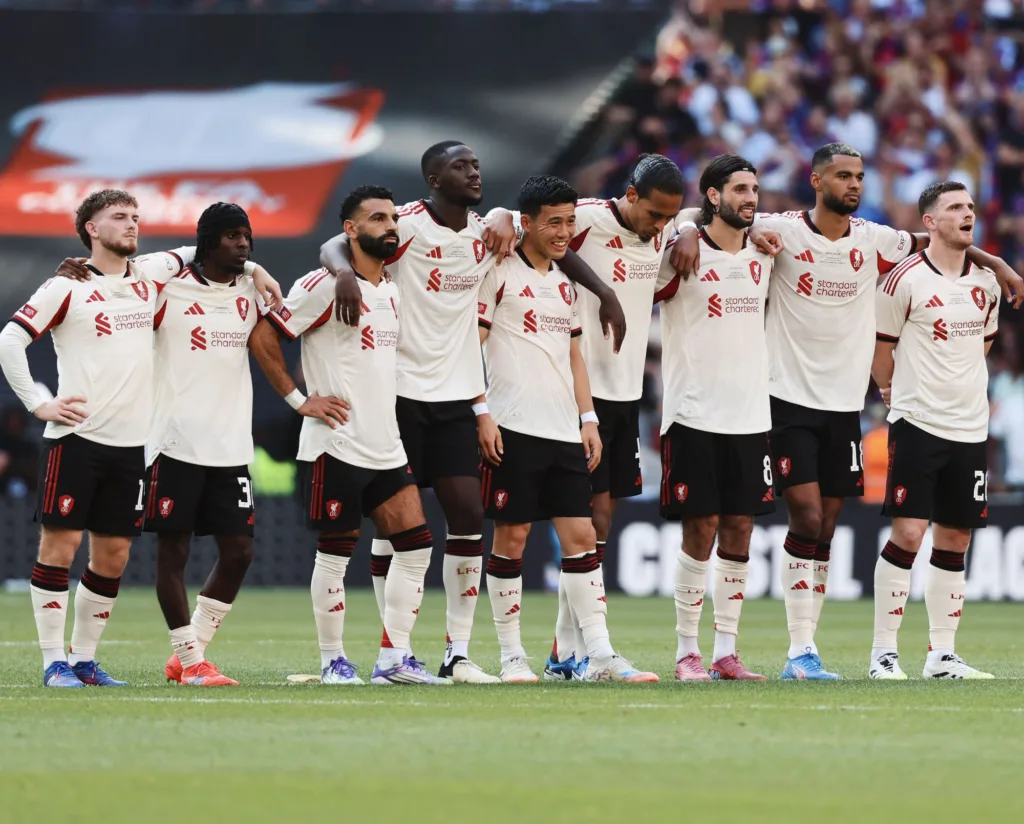
The time for excuses has passed. The time for tactical experimentation is over. The time for mourning, while never truly ending, must be channeled into motivation.
The time for Liverpool to rescue their Premier League season is now – or it may be never.
Read More: How Haiti Reached the 2026 World Cup Without Ever Playing at Home
FAQs
How catastrophic has Liverpool’s Premier League start been compared to last season?
Liverpool have lost five of their first eleven Premier League games, sitting in eighth place with 18 points. After winning their first five matches (including beating Everton on September 20 to top the table with 15 points), they’ve lost five of their last six. This compares to losing only four games in the entire 2024-25 title-winning season, with two of those coming after clinching the title when performances eased off.
Why has Florian Wirtz failed to produce in the Premier League despite his £100-116 million price tag?
Wirtz hasn’t registered a single goal or assist in the Premier League despite excellent Champions League form. His creative output drops dramatically in domestic competition: 1.7 open-play chances created per 90 in the Premier League versus 4.2 in Champions League; only 0.1 big chances per 90 versus 1.3 in Europe; and expected assists of 0.15 in the league compared to 0.55 in Champions League. However, his two assists for Germany against Slovakia may provide the confidence boost needed.
How significantly has Diogo Jota’s tragic death impacted Liverpool’s season?
The emotional impact has been profound and ongoing. Vice-captain Andy Robertson revealed he “couldn’t get my mate Diogo Jota out of my head” even during Scotland’s World Cup qualifier, admitting he “was in a bit of trouble in my room earlier” but tried to hide it from teammates. Robertson spent five years playing alongside Jota, and every game serves as a stark reminder. In elite sport where margins are paper-thin, such devastating emotional trauma cannot be dismissed as a contributing factor.
What are the most alarming statistics from Liverpool’s Premier League collapse?
Multiple statistics reveal systemic failure: only 27.3% big chance conversion (down from 38.7% last season); 1.6 goals per game (down from 2.3); 29 big chances allowed (only Burnley and West Ham worse); spending 36.9% of game time losing (already 67% of last season’s total in just 11 games); leading for only 24.1% of matches (down from 45.6% last season); conceding first in 8 of last 10 games; and losing every Premier League match where they’ve trailed at any point.
Can Liverpool realistically salvage their Premier League season and what must happen?
Yes, there’s realistic hope if they act immediately. Liverpool face significantly easier fixtures, starting with 19th-placed Nottingham Forest, with only one top-half opponent in their next five games. Alexander Isak (26.4% non-penalty conversion rate last season vs Liverpool’s current 15.3%) is returning, Wirtz is gaining confidence, and historical patterns show Liverpool’s underlying numbers improved markedly after game 11 last season. However, they must achieve near-perfect results in upcoming games – anything less would be catastrophic for their title defense.

